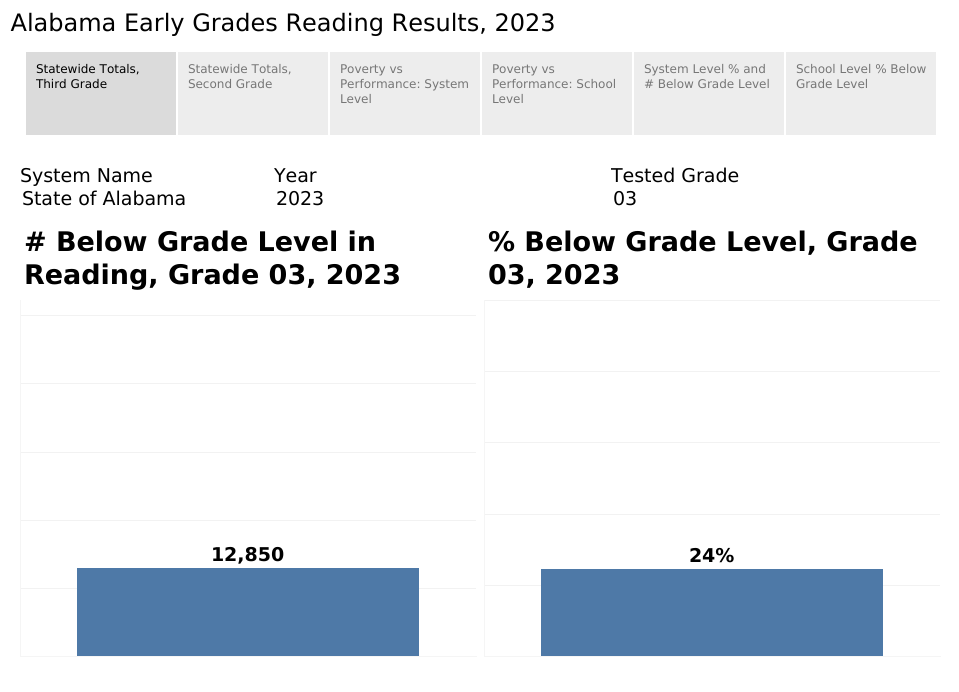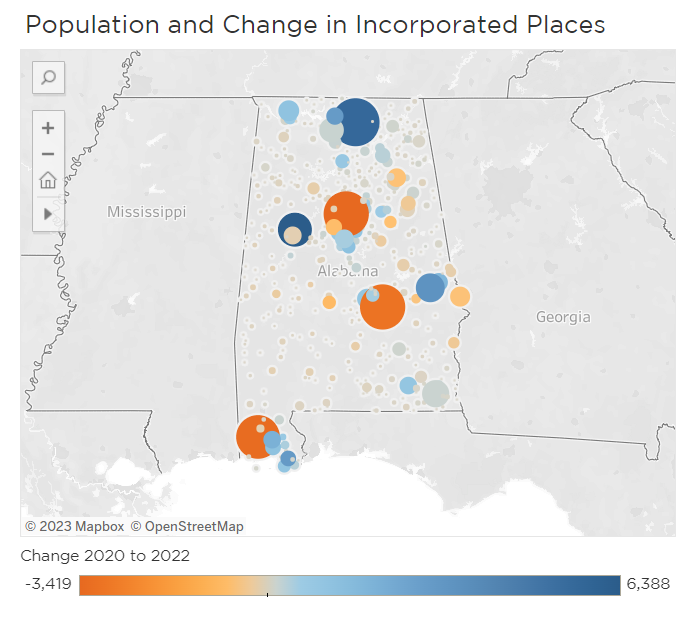
About one-quarter of Alabama third graders were not reading on grade level by the end of third grade, leaving them vulnerable to academic struggles as they progress in school, according to data from the reading subsection of the Alabama Comprehensive Assessment Program released Thursday.
Printable PDF version available here.
Among second graders, 11,622 or 22% of students statewide were below grade level at the end of second grade. Parents and educators have a year to get those struggling readers caught up to grade level. Next year, the final piece of the Literacy Act is set to go into effect. Third graders who haven’t caught up to grade level by next spring could be vulnerable to being held back.
Since the Literacy Act was passed in 2019, the State Legislature has provided major increases in funding for reading instruction and services, re-energizing the Alabama Reading Initiative (ARI) and school-based reading coaches. Teachers from Kindergarten to third grade across the state have received intensive professional development designed to improve the teaching of reading, an instructional approach based in the science of reading.
ARI has deployed extra support to high-needs schools. Alabama’s Literacy Act was based on similar legislation in Mississippi and Florida. Both those states have seen significant gains in early grades literacy after implementing reforms.
This year, 24% of Alabama third graders tested below grade level. That’s up from 22% in 2022. State Education officials pointed out that the 2023 test was updated to reflect the state’s new course of study and differed from the 2022 test. (See information from the Department). Also, this year’s third graders were in kindergarten when schools closed in Spring of 2020 due to the Covid-19 pandemic. Their first-grade year was, in many cases, disrupted by continuing complications of the pandemic, including remote learning during a critical period for their reading instruction.
Not all students reading below grade level would be retained under the act. The Literacy Act contains good cause exceptions for students who are receiving services for diagnosed learning disabilities. The Act also provides alternative methods of measuring a child’s literacy level. However, the goal of the Act is to encourage parents and schools to identify struggling readers early and provide needed interventions so they are ready for the educational pivot that occurs in fourth grade.
Alabama Reading Initiative Director Bonnie Short told State Board of Education members Thursday that initial analysis indicates systems where more teachers were trained in and fully implemented the research-based approaches to instruction gains in reading performance were higher.
By fourth grade, students are expected to know how to read and to use reading to learn. According to research:
- A child not reading proficiently by the end of 3rd grade is four times more likely to fail to graduate from high school. Among students who failed to complete high school, 2/3 were not reading on grade level by the end of third grade.
- A struggling reader who is also poor is three times more likely to fail to graduate than a struggling reader who isn’t living in poverty.
- Source: Jeopardy: How Third Grade Reading Skills and Poverty Influence High School Graduation
All students from kindergarten through third grade who aren’t reading at grade level are provided literacy boot camps in the summer. In high-need schools, all students are offered the opportunity. According to Alabama State Superintendent Eric Mackey, about half the students who take advantage of the summer program test at grade level by the end of the summer. However, not all of the identified children attend the summer literacy programs, as they are not required to. The state department and school systems are trying to encourage attendance and remove barriers. This summer, the state has authorized the use of transportation support for the literacy camps.
The highest concentration of students testing below grade level tend to be found in school systems where the poverty level is highest. The graphic below shows that correlation.
But demographics are not destiny. At the school level, there is a wide variation in the percentage of students reading below grade level. Thus, school-based leadership, teaching, training, culture, and resources make a difference.
You can explore your local system and compare results to peer systems, systems with similar economics and demographics.
Results are also available at the school level.

